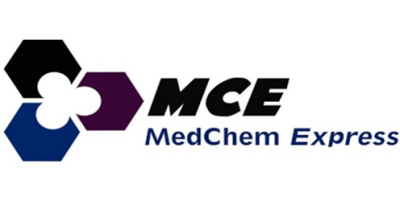

- Home
- Companies
- MedChemExpress LLC (MCE)
- Products
- MedChemExpress - Model Naloxone ...
MedChemExpress - Model Naloxone hydrochloride - 357-08-4
Naloxone hydrochloride is an antagonist of Opioid receptor. Naloxone hydrochloride alleviates opioid-overdose-induced respiratory depression. Naloxone hydrochloride may cause pulmonary edema and cardiac arrhythmias[1].MCE products for research use only. We do not sell to patients.
Naloxone hydrochloride
MCE China:Naloxone hydrochloride
Brand:MedChemExpress (MCE)
Cat. No.HY-17417
CAS:357-08-4
Purity:99.96%
Storage:4°C, sealed storage, away from moisture *In solvent : -80°C, 6 months; -20°C, 1 month (sealed storage, away from moisture)
Shipping:Room temperature in continental US; may vary elsewhere.
Description:Naloxone hydrochloride is an antagonist of Opioid receptor. Naloxone hydrochloride alleviates opioid-overdose-induced respiratory depression. Naloxone hydrochloride may cause pulmonary edema and cardiac arrhythmias.
In Vivo:Naloxone (2.0 mg/kg with constant infusion of 1.7 mg/kg/h) causes a significant improvement in neurobehavioral outcome which persists up to 4 weeks postinjury in rat. Naloxone treatment causes a modest and nonsignificant increase in mean arterial blood pressure (MAP)[1]. Naloxone (0.4 mg/kg) causes memory facilitation and antagonizes the amnestic effect of ACTH and epinephrine in rat[2]. Naloxone treatment diminishes the strength of the initial tetanus in a dose-related manner in cats. Naloxone (5 or 10 mg/kg, i.v.) causes subsequent doses of morphine to produce less PTP depression but has no effect on maximal twitch depression[3].
Animal Administration:Young adult Wistar rats are used in the assay: females for experiments l and 3 (age 50-70 days, weight 100-185 g) and males for experiments 2 and 4 (age 51-69 days, weight 140-200 g). The same apparatus is used for both: a 50×25×25 cm box made of plywood with a frontal glass wall, whose floor consists of 1 mm-caliber bronze bars spaced l0 mm apart. In task l, a 5 cm high, 25×25 cm wooden platform is introduced into the box so as to cover the left half of the grid. Rats are held gently by their bodies and loared onto the platform facing the rear left corner, at which time a quartz chronometer is activated. Time is counted until the animals stepped down from the platform and placed their four paws on the grid, upon which a 0.5 mA, 60 Hz footshock is continuously delivered until the animals return to the platform. In task 2 the platform is only 7 cm wide and covered only the leftmost seven bars of the grid; the footshock is of only 0.3 mA and is delivered in 0.4 msec pulses once every 2 sec until the animals climb back onto the platform. Immediately after training in each task the animals are withdrawn from the box injected i.p. with one of the following: saline (1.0 mL/kg), ACTH1-24 (0.2 or 2.0 μg/kg), epinephrine HCl (5.0 or 50.0 μg/kg), human β-endorphin (0.1 or 1.0 μg/kg), naloxone HCl (0.4 mg/kg), or ACTH or epinephrine given together with either β-endorphin or naloxone. All drugs are dissolved in saline to an injection volume of 1.0 mL/kg. Twenty-four hr after training the animals again are placed on the platform (the wide one for task 1, experiments 1 and 2, and the narrow one for task 2, experiments 3 and 4), and their latency to stepdown onto the grid again is measured as in the training session. A ceiling of 180 sec is imposed on this measure.
Hot selling product:Propyl pyrazole triol | Tomatine | CV-6209 | CA-170 | Fluzoparib | CC-90002 | 1,3-Diphenylisobenzofuran | SF1670 | Ristocetin | Ginsenoside Rb5
Trending products:Recombinant Proteins | Bioactive Screening Libraries | Natural Products | Fluorescent Dye | PROTAC | Isotope-Labeled Compounds | Oligonucleotides
References:
[1]. McIntosh TK, et al. Beneficial effect of the nonselective opiate antagonist naloxone hydrochloride and the thyrotropin-releasing hormone (TRH) analog YM-14673 on long-term neurobehavioral outcome following experimental brain injury in the rat. J Neurotrau [Content Brief]
[2]. Sun L, et al. Endocannabinoid activation of CB1 receptors contributes to long-lasting reversal of neuropathic pain by repetitive spinal cord stimulation. Eur J Pain. 2017 May;21(5):804-814. [Content Brief]
[3]. Izquierdo I, et al. Effect of ACTH, epinephrine, beta-endorphin, naloxone, and of the combination of naloxone or beta-endorphinwith ACTH or epinephrine on memory consolidation. Psychoneuroendocrinology. 1983;8(1):81-7. [Content Brief]
[4]. Soteropoulos GC, et al. Neuromuscular effects of morphine and naloxone. J Pharmacol Exp Ther. 1973 Jan;184(1):136-42. [Content Brief]
Brand introduction:
• MCE (MedChemExpress) has a global exclusive compound library of more than 200 kinds, and we are committed to providing the most comprehensive range of high-quality small molecule active compounds for scientific research customers around the world;
• More than 50,000 highly selective inhibitors and agonists are involved in various popular signaling pathways and disease areas;
• The products cover a variety of recombinant proteins, peptides, commonly used kits, more PROTAC, ADC and other characteristic products, widely used in new drug research and development, life science and other scientific research projects;
• Provide virtual screening, ion channel screening, metabolomics analysis detection analysis, drug screening and other professional technical services;
• It has a professional experimental center and strict quality control and verification system;
• Provide LC/MS, NMR, HPLC, chiral analysis, elemental analysis and other quality inspection reports to ensure the high purity and high quality of products;
• The biological activity of the products has been verified by the experiments of customers in various countries;
• A variety of top journals such as Nature, Cell, Science and pharmaceutical patents have included the scientific research results of MCE customers;
• Our professional team tracks the latest pharmaceutical and life science research and provides you with the latest active compounds in the world;
• It has established long-term cooperation with the world's major pharmaceutical companies and well-known scientific research institutions。
